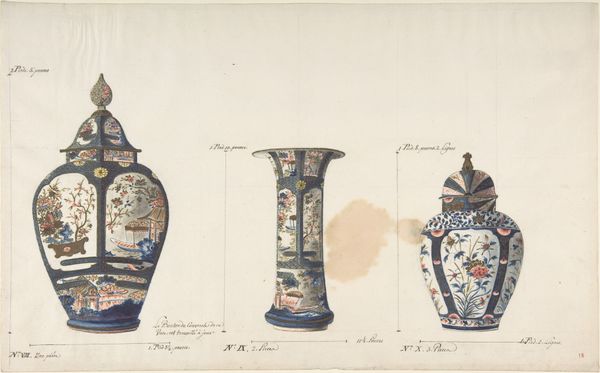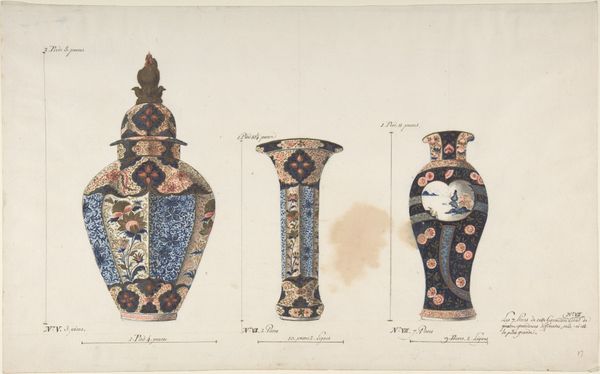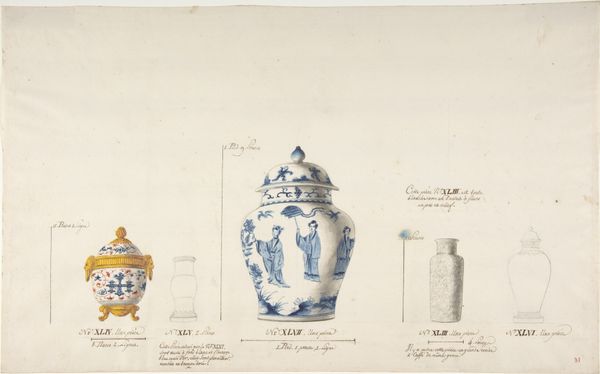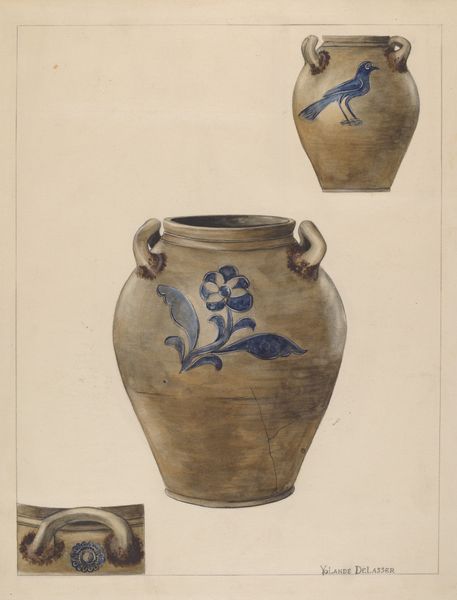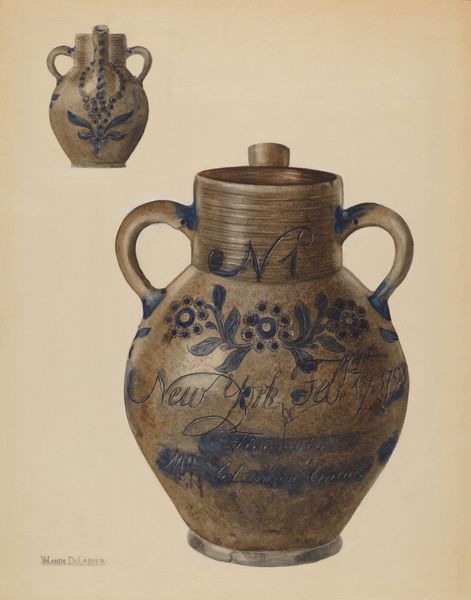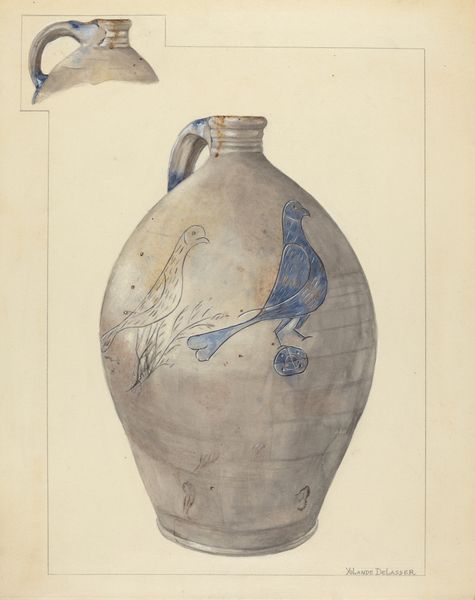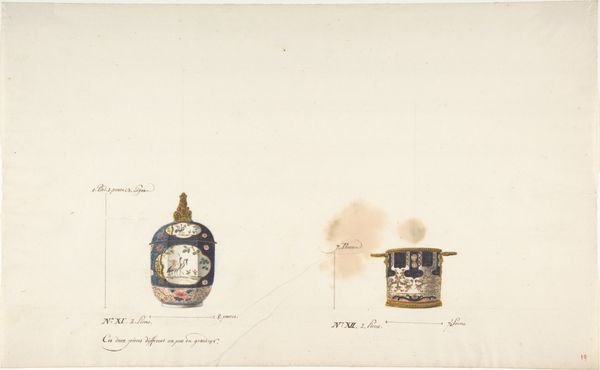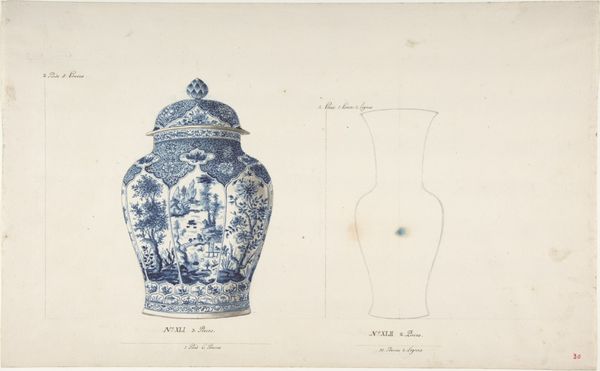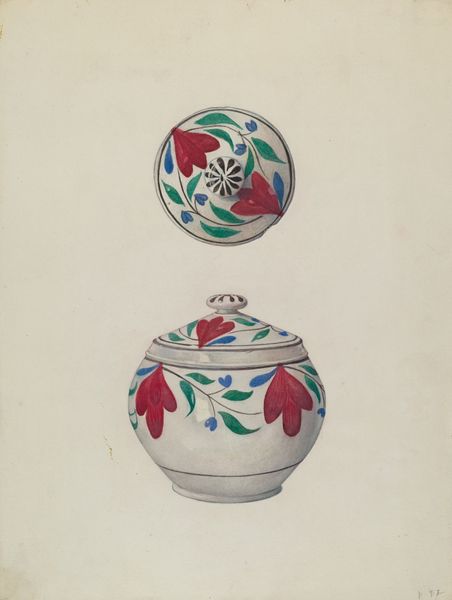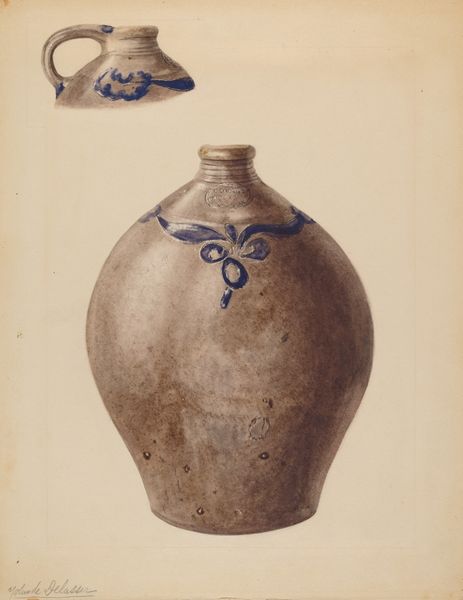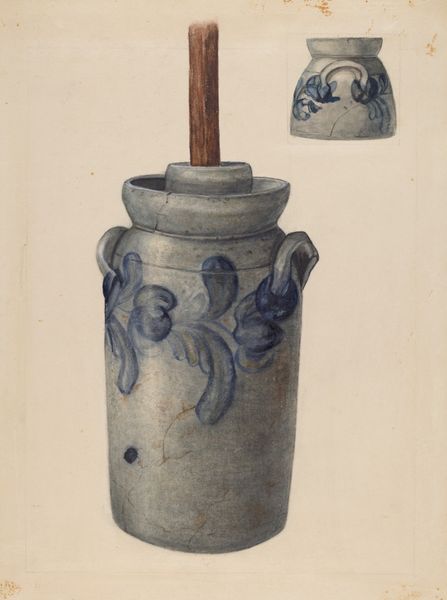
Dimensions: 14 7/8 x 9 3/16 in. (37.8 x 23.4 cm)
Copyright: Public Domain
Curator: Here we have "Design for Two Vases" made sometime between 1765 and 1790, now residing at the Metropolitan Museum of Art. The piece uses watercolor, colored pencil, and what appears to be a print underlay to illustrate, well, exactly what the title describes: two different vase designs. Editor: My first thought is whimsy. The color palette feels quite cheerful, with the blues and pinks and those fanciful, almost cartoonish cranes perched on branches. The composition also lends to a lightness with each vase depicted isolated on the page. There's space to breathe around the illustrations. Curator: That lightness reflects the broader Rococo movement. We can examine these vases as commodities in the burgeoning market for chinoiserie, an aesthetic born from European fascination with East Asian artistic styles and techniques. The vases themselves, whether ultimately produced or purely aspirational, speak volumes about evolving tastes and trade networks of the late 18th century. Editor: I agree. The adoption and adaptation of imagery are telling, as is the European desire to interpret Eastern styles through its own lens. Were the designers engaging respectfully or appropriating cultural motifs to enhance their commercial appeal within a Eurocentric market? Who had access to these goods, and what did possessing them signify about wealth and social status at the time? Curator: These are crucial questions! To consider that the piece is just "pretty" misses the socio-economic implications of the work and production behind the work itself. The access to these items and their production has global implications worth considering even today. Editor: Exactly! I'm captivated by these hybrid cultural representations—simultaneously beautiful and imbued with colonial history, demanding interrogation beyond aesthetics alone. This is about challenging assumptions and disrupting entrenched, often exclusionary narratives that dominate art history. Curator: You've reframed this for me! I'm leaving here ready to look deeper at what these vases represent. Thanks! Editor: My pleasure, a valuable object always inspires a desire to see the cultural systems that led to its creation and popularity.
Comments
No comments
Be the first to comment and join the conversation on the ultimate creative platform.
